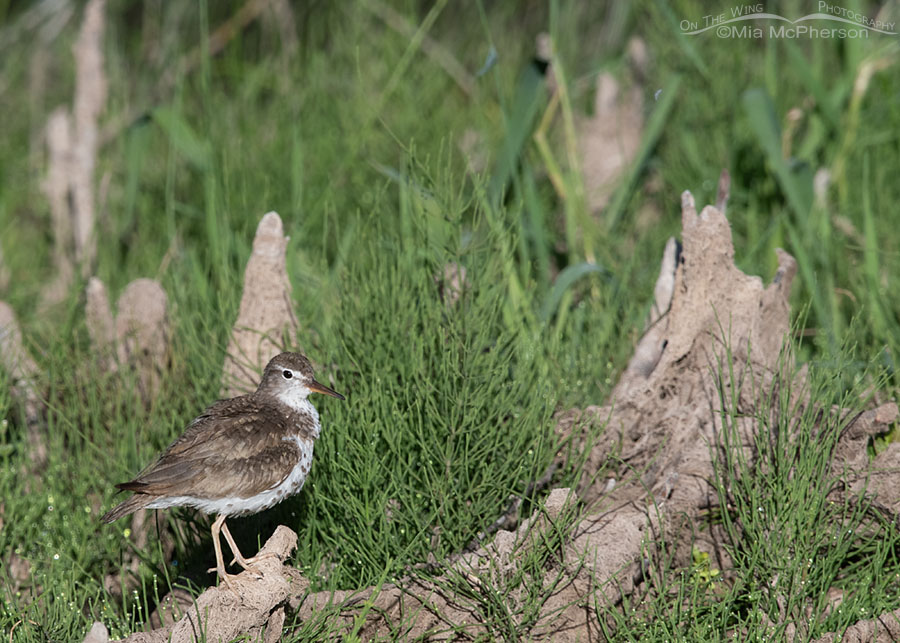 Adult Spotted Sandpiper near its chicks – Nikon D500, f7.1, 1/2000, ISO 500, -0.7 EV, Nikkor 500mm VR with 1.4x TC, natural light
Adult Spotted Sandpiper near its chicks – Nikon D500, f7.1, 1/2000, ISO 500, -0.7 EV, Nikkor 500mm VR with 1.4x TC, natural light
I was able to get back out into the field yesterday and I had a marvelous time photographing young Spotted Sandpiper chicks and learning more about their behaviors near a creek in the Wasatch Mountains.
In the past I have photographed Spotted Sandpipers in Florida on their wintering grounds and out here in the Western U.S. I’ve had wonderful opportunities with adults in breeding plumage and have gotten glimpses of their chicks. This year is the first time I have been able to see, photograph and learn more about the tiny Spotted Sandpiper chicks I found high in the mountains that are close to home. I’ve also been able to observe and photograph the adult that always stays near those chicks.
The adult I photographed yesterday wasn’t always close to its chicks but it did call frequently as it foraged for food for itself. It wasn’t an alarm call most of the time just a single note repeated often and I wondered as I took photos of it if it was calling to let its chicks know that it was close by. The chicks sometimes answered those calls with a single note too.
In this photo the adult sandpiper had flown from the far bank of the creek and had gotten closer to its chicks. I definitely saw three chicks simultaneously at one point in time yesterday and can only imagine how challenging it must be for the adults to keep up with them. I presume this to be a male because male Spotted Sandpipers usually rear the young.
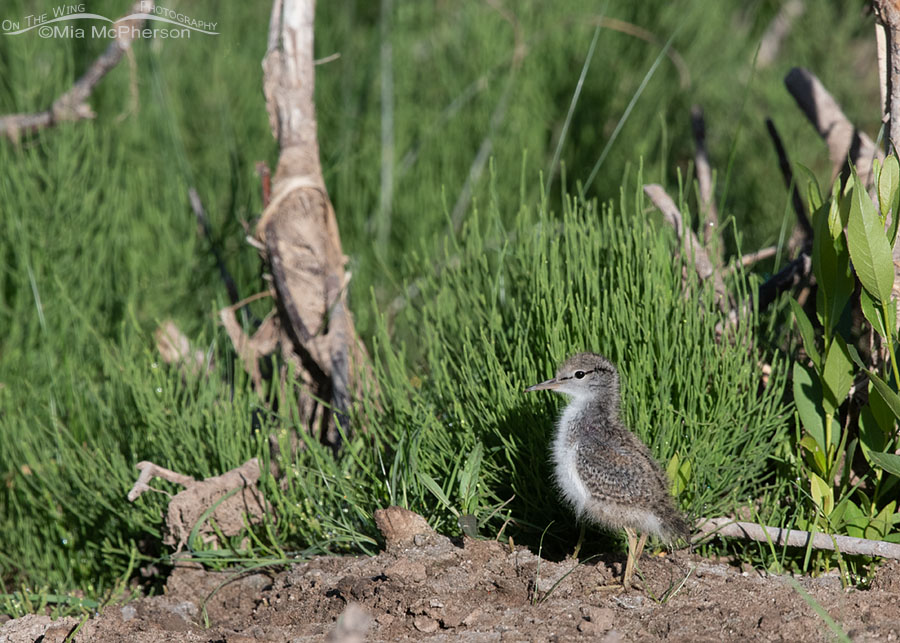 Spotted Sandpiper chick near green grasses – Nikon D500, f7.1, 1/1600, ISO 500, -0.7 EV, Nikkor 500mm VR with 1.4x TC, natural light
Spotted Sandpiper chick near green grasses – Nikon D500, f7.1, 1/1600, ISO 500, -0.7 EV, Nikkor 500mm VR with 1.4x TC, natural light
The young Spotted Sandpiper chicks were busy foraging and wandering around the area, they move quickly most of the time and their little butts bounce up and down constantly. This chick took a short break from foraging and butt-bouncing to stand tall near some green grasses that have grown since the water level of the creek dropped after the height of spring run off.
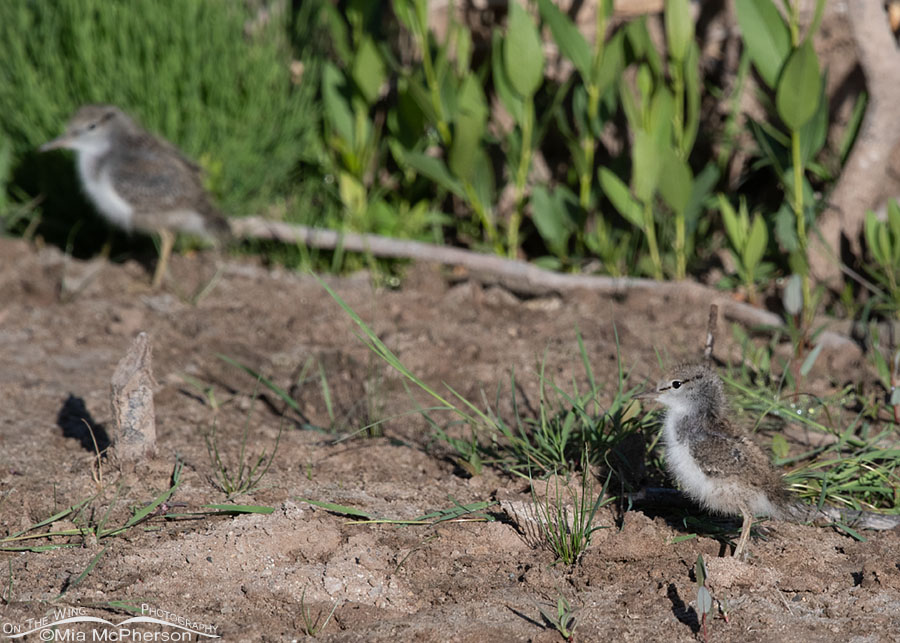 Spotted Sandpiper chicks foraging in the Wasatch Mountains – Nikon D500, f7.1, 1/2000, ISO 500, -0.7 EV, Nikkor 500mm VR with 1.4x TC, natural light
Spotted Sandpiper chicks foraging in the Wasatch Mountains – Nikon D500, f7.1, 1/2000, ISO 500, -0.7 EV, Nikkor 500mm VR with 1.4x TC, natural light
The sandpiper chicks were never close enough to get a group image of them where more than one of the chicks were sharply in focus but I like this photo because it showed two of the chicks in close proximity and even though one of them is out of focus I find this image to be enchanting.
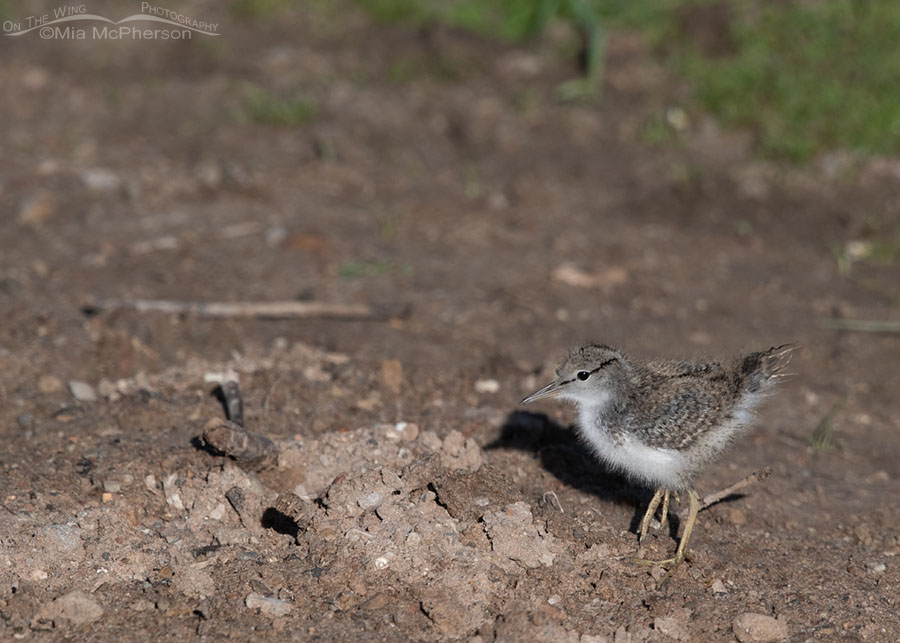 Spotted Sandpiper chick foraging on a dry creek bed – Nikon D500, f7.1, 1/2500, ISO 500, -0.7 EV, Nikkor 500mm VR with 1.4x TC, natural light
Spotted Sandpiper chick foraging on a dry creek bed – Nikon D500, f7.1, 1/2500, ISO 500, -0.7 EV, Nikkor 500mm VR with 1.4x TC, natural light
As the Spotted Sandpiper chicks scurried around they picked at small things where the creek bed had dried up, in the grasses and at the lower leaves of nearby willows. I’ll look closely at the rest of the images I took to see if I can find any images where there is prey visible.
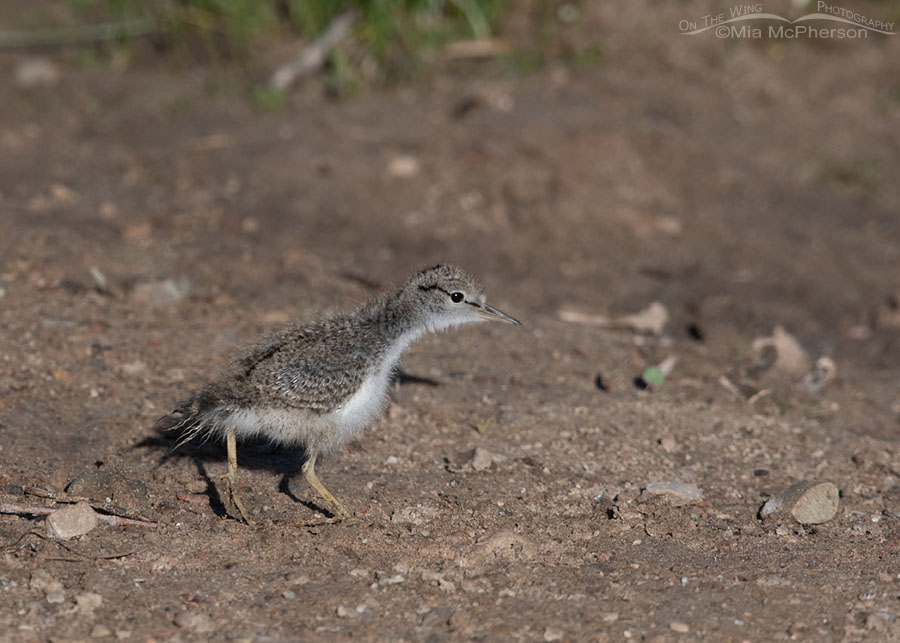 Young Spotted Sandpiper chick foraging – Nikon D500, f7.1, 1/2000, ISO 500, -0.7 EV, Nikkor 500mm VR with 1.4x TC, natural light
Young Spotted Sandpiper chick foraging – Nikon D500, f7.1, 1/2000, ISO 500, -0.7 EV, Nikkor 500mm VR with 1.4x TC, natural light
It was a delight for me to see this one strike a pose I have seen adult Spotted Sandpipers use when they spot prey. I have to admit I smiled when I took this photo.
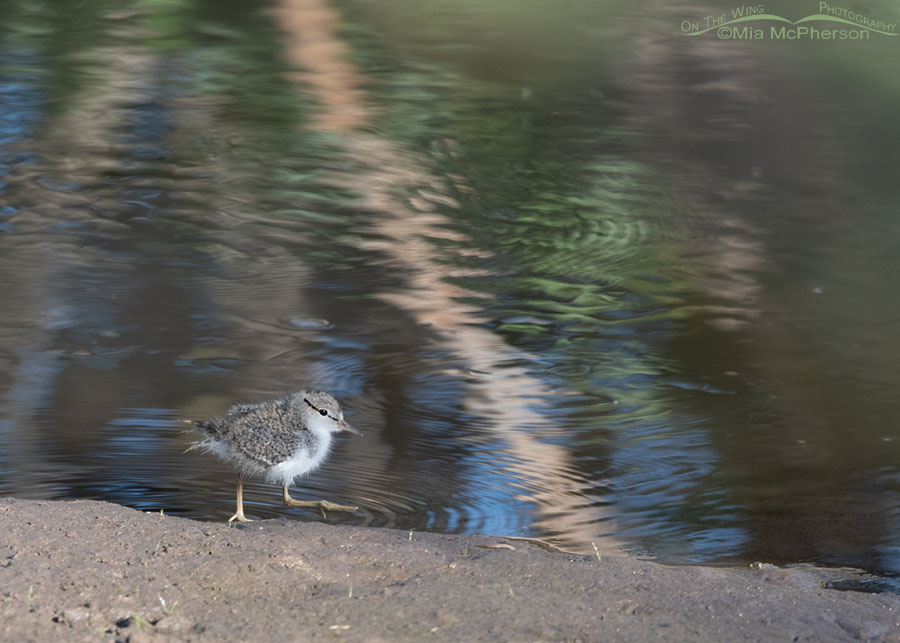 Spotted Sandpiper chick walking close to the water’s edge – Nikon D500, f7.1, 1/640, ISO 500, -0.3 EV, Nikkor 500mm VR with 1.4x TC, natural light
Spotted Sandpiper chick walking close to the water’s edge – Nikon D500, f7.1, 1/640, ISO 500, -0.3 EV, Nikkor 500mm VR with 1.4x TC, natural light
And even though this chick was in the distance it was near the flowing water of the creek and I felt I had to take images of it walking along the water’s edge even if I never shared them with another person, the chick was just that cute. I was delighted when I saw the young sandpiper had one foot raised in this frame.
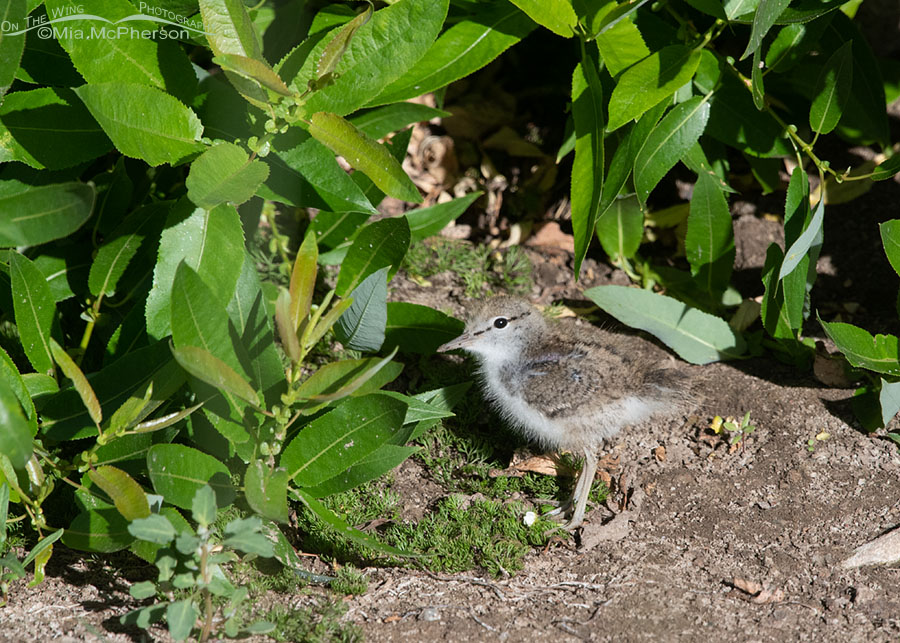 Willows and a young Spotted Sandpiper chick – Nikon D500, f7.1, 1/1250, ISO 500, -0.3 EV, Nikkor 500mm VR with 1.4x TC, natural light
Willows and a young Spotted Sandpiper chick – Nikon D500, f7.1, 1/1250, ISO 500, -0.3 EV, Nikkor 500mm VR with 1.4x TC, natural light
I don’t know how much longer the young Spotted Sandpiper chicks will hang around in the area where I photographed them but I am over the moon to have had two great opportunities with them so far. These young Spotties were such a pleasure and a joy to watch and photograph.
Life is good.
Mia
Click here to see more of my Spotted Sandpiper photos plus facts and information about this species.
Please note that I photographed these chicks from a distance with a long lens. I always put the welfare of my subject above the photos I take.
Ethics on photographing chicks and young birds:
- Do not approach too closely;
- If the birds show any sign of distress, back away;
- Don’t trim leaves, twigs or branches to get a clearer shot, you may inadvertently attract predators or cause the eggs/chicks to over heat;
- Follow local, state and federal guidelines concerning nesting birds;
- Don’t harass the birds to get an action shot;
- Don’t stay a long time with nesting birds or chicks, that disrupts their normal behavior;
- Always put the safety and comfort of the birds first.
For more information on the ethics of photographing nesting birds or chicks check out the Principles of Birding Ethics published by the American Birding Association.


Adorable, for some reason the line through the eye reminds me of a level.
Life goes on. What a beautiful series of baby Sandpiper pics. Thanks Mia.
ABSOLUTE charmers.
Many, many thanks.
I guess my age is showing – these image are hugely cute! Great shots!!
I am so happy for you (and envious) that you got to photograph these cute little chicks again. They are adorable.
That line through the eye is so distinctive. Never seen a chick up close like this. Thank you!